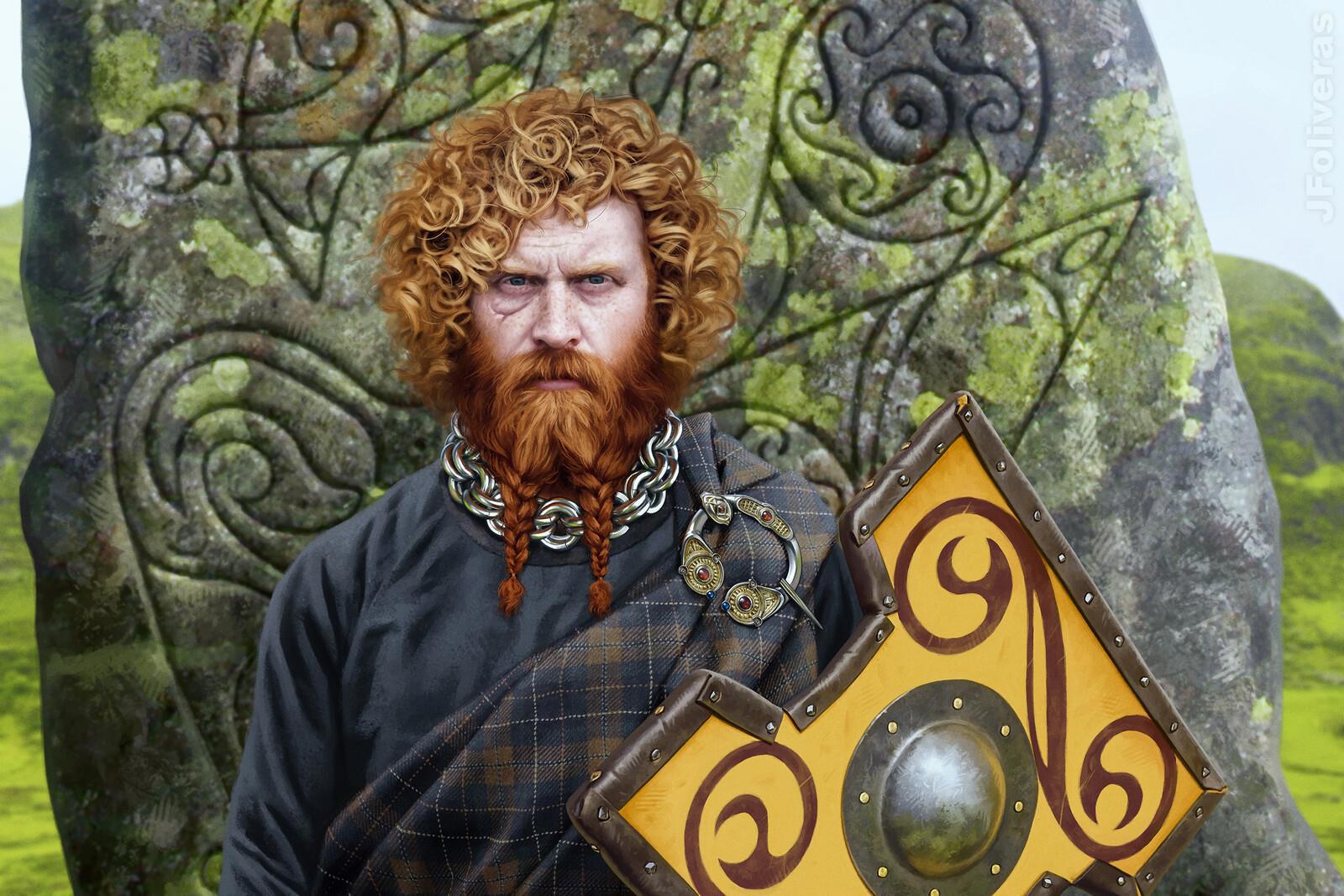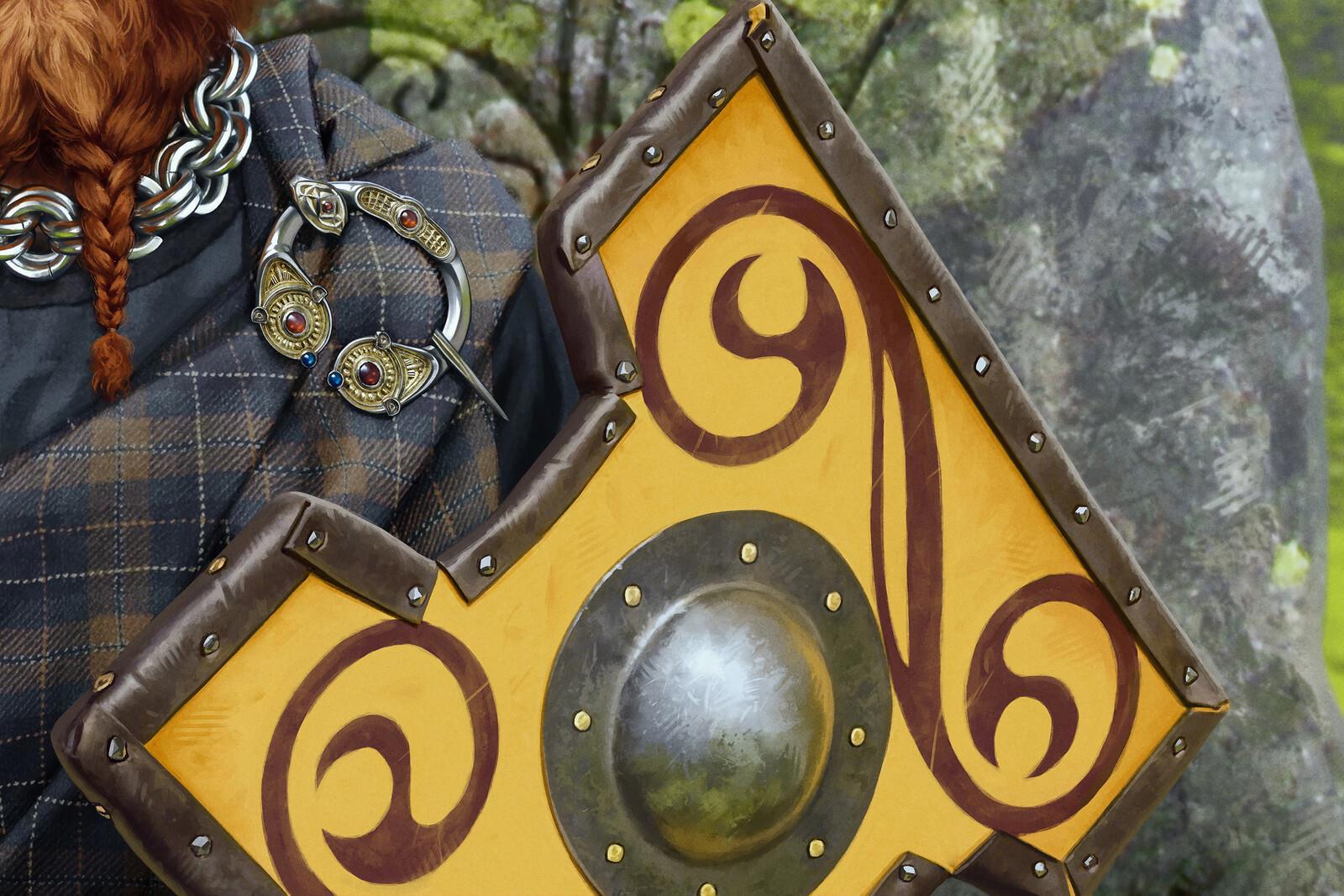Пиктский вождь.
Автор: Homo Vulgaris
PICTISH CHIEFTAIN. Done for my project about the Migration Period.
The Picts were the inhabitants of what is now Scotland from the 4th to the 9th centuries AD approximately. Their language is now extinct, and there has been a lot of debate about whether they spoke Celtic (an Indo-European language) or a Pre-Indo-European residual language (putting it in the same category as ancient Iberian, Etruscan and Basque). However, their toponyms and personal names are undoubtedly Celtic, being that the strongest evidence we have for their language. The Pictish language was eventually replaced by another Celtic language of a different branch: Gaelic, which came from Ireland, and is still spoken today in Scotland in the local variant.
The Picts were the successors of an earlier Celtic people that the Romans called “Caledonians”. The Caledonians were part of the insular form of the La Tène material culture that dominated Pre-Roman Celtic Europe during the Iron Age. But as Rome took over Gaul and Britain, the Celtic culture that had originated in the Alps at the end of the Bronze Age and expanded over much of Europe, started to decline. The Celts of northern Britain (among whom were the Caledonians) and Ireland became the last Celtic stronghold in a Europe dominated by the Roman Empire. These territories would never be Romanised and have retained their Celtic identities and language to the modern-day. The Caledonians started to be known as Picts during Late Antiquity, and when Rome collapsed and the Saxons (Germanic tribes from what is now Denmark) took control of Roman Britain, the Pictish kingdoms resisted Saxon occupation too, lasting long enough to suffer the first waves of Viking incursions.
A distinct Pictish culture developed from the La Tène culture of their Caledonian ancestors as a result of their isolation caused by the Roman conquest of Britain, which concluded in the 2nd century with the construction of two massive walls that marked the northernmost frontier of the empire: Hadrian’s Wall and the Antonine Wall, the second being abandoned shortly after its construction. Hadrian’s Wall marked, from the Roman point of view, the limit between the civilized world and the uncivilized barbarians in the north. Shortly after the Roman abandonment of Britain, the Picts started their progressive conversion to Christianity.







 ️
️